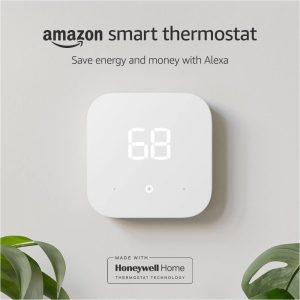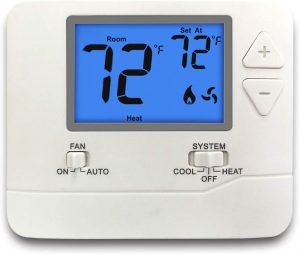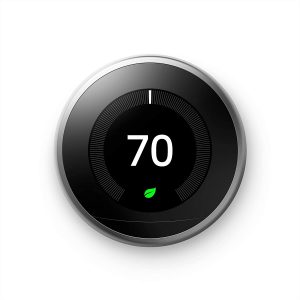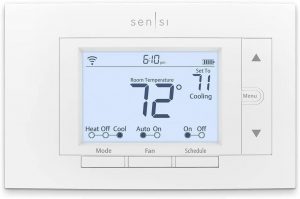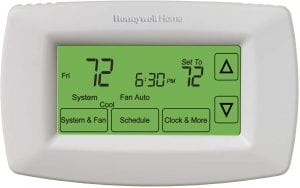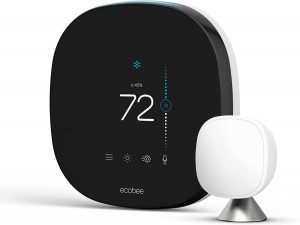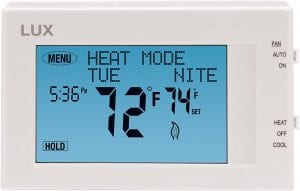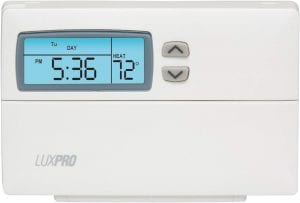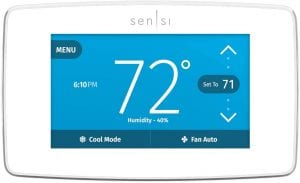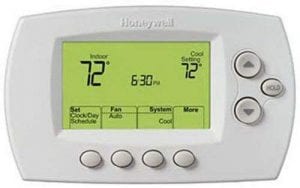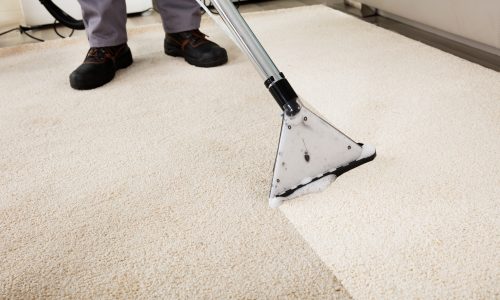The Best Thermostat
We looked at the top 10 Thermostats and dug through the reviews from 56 of the most popular review sites including and more. The result is a ranking of the best Thermostats.
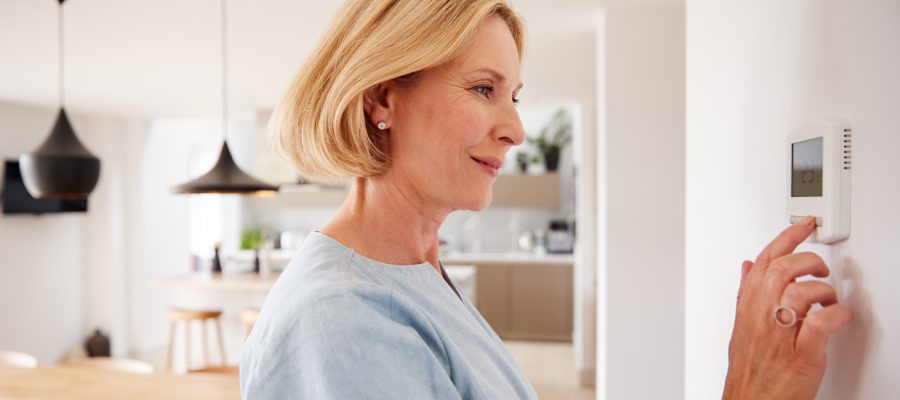
Our Review Process
Don't Waste Your Money is focused on helping you make the best purchasing decision. Our team of experts spends hundreds of hours analyzing, testing, and researching products so you don't have to. Learn more.
Our Picks For The Top Thermostats
- 1. Amazon Eco-Friendly Automatic Thermostat
- 2. ELECTECK Easy Install Precise Thermostat
- 3. Google Nest Learning Wireless Auto-Schedule Thermostat
- 4. Emerson Sensi Smart Energy Saving Home Thermostat
- 5. Honeywell Home RTH7600D Smart Response Backlit Thermostat
- 6. ecobee Automatic Energy Star Thermostat
- 7. Lux Products TX9600TS Customizable Easy Read Touchscreen Thermostat
- 8. LUXPRO Deluxe 5-2 Day Programmable Thermostat
- 9. Emerson Sensi Smart Privacy Protection Thermostat
- 10. Honeywell User-Friendly Personalizable Thermostat
It's important to choose a thermostat that saves energy, which this model does. It's Energy Star certified and even works with an app that keeps track of your energy use. In fact, you can completely control the thermostat using the app, which means you can adjust the temperature from work if you forgot to do so at home.
Reliable UnitIf you use Alexa, you'll be pleased to discover that this thermostat is fully compatible.
Compatible with both gas and electric heating units, this basic thermostat is super easy to install. It uses just two AAA batteries and features a large LCD display with a handy blue backlight to make the temperature visible at night. While this option isn't programmable, you can purchase the programmable unit for just a few dollars more.
Budget-Friendly PickYou'll love the affordable price tag on this top-notch thermostat.
With built-in sensors that track your location and algorithmic capability, this thermostat learns your habits and creates a custom temperature schedule that adjusts automatically. The attractive appearance is also practical, with large digital readings that are easy to see. Quick installation is an added benefit.
Responsive Tech That Learns Your PreferencesThis thermostat learns what you like and programs itself.
Smart alerts help detect extreme temps and humidity in your home, so you can adjust accordingly. Quick DIY installation will have you up and running in 30 minutes or less. The app is intuitive and makes setup and configuration simple.
User-Friendly Comfort ControlThis thermostat is easy to install, setup and control.
Buying Guide
Updating your home’s thermostat could have multiple benefits, from keeping you more comfortable at all times to noticeably slashing your energy bill. With many makes and models available, choosing the best one for your needs might seem daunting.
While smart thermostats have loads of features and options, Vicki Liston, producer, writer and narrator of “On The Fly…DIY,” says this might not be the best choice for some consumers.
“Not everyone is rushing to the ‘smart’ bandwagon,” Liston says. “Whether concerned with hacking or budgetary constraints, there is a large part of the population with no interest in connecting their private life and sensitive home functions to the latest smart technologies. The good news is that you can still create an energy-efficient environment while using a more traditional unit.”
Liston says that programmable thermostats provide some of the advantages of smart thermostats without the need for a network connection.
“Using a programmable thermostat is still the best way to regulate your home’s temperature and energy use while being cost-effective enough to work into almost every budget,” explains Liston. “Simply program the unit based on your schedule. This will be easier if you happen to keep the same hours each week, providing a ‘set it and forget it’ type of control.
“For example, if I work Monday through Friday from 8 a.m. to 5 p.m., I would program Monday, Tuesday, Wednesday, Thursday and Friday to save on heating and cooling costs when I leave and then return the temperature to a more comfortable level during my commute home. I’d program Saturday and Sunday differently as I’d probably be around more often.
“However, what if I’m sick and stay home during a weekday? Or I decide to go out of town over the weekend? Programming is important but so is reprogramming so ensure the thermostat can be easily adjusted to keep up with your life. Look for a ‘hold’ option that will allow you to trump current programming and hold the temperature at a certain level. This will allow the programming to take over again once the ‘hold’ is no longer selected, avoiding the need to reprogram all over again.”
Our Expert Consultant

Home Improvement Expert
Vicki Liston writes, produces, and narrates “On The Fly…DIY,” an award-winning home improvement and DIY show of unique project tutorials for the casual DIY’er.
Home improvement and all things DIY have been Liston’s passion since she bought her first house in 2007 and she started making video blogs in 2014. She’s performed hundreds of DIY projects, from small ones to major, wall-smashing renovations and can teach you how to make a trendy DIY barn door for cheap. The proceeds earned from “On The Fly…DIY” are donated to no-kill animal shelters and rescue organizations.
Why we recommend these thermostats?
Products Considered
Products Analyzed
Expert Reviews Included
User Opinions Analyzed
Our experts reviewed the top 10 Thermostats and also dug through the reviews from 56 of the most popular review sites including and more. The result is a ranking of the best of the best Thermostats.
DWYM is your trusted roduct review source. Our team reviews thousands of product reviews from the trusted top experts and combines them into one easy-to-understand score. Learn more.
The Best Bang For Your Buck
ELECTECK Easy Install Precise Thermostat
Key Takeawy
Compatible with both gas and electric heating units, this basic thermostat is super easy to install. It uses just two AAA batteries and features a large LCD display with a handy blue backlight to make the temperature visible at night. While this option isn't programmable, you can purchase the programmable unit for just a few dollars more.
What to Look For
- According to the U.S. Department of Energy, turning your thermostat down from its usual setting by 7-10 degrees Fahrenheit for 8 hours a day can reduce your heating and cooling bill by up to 10% a year. Consider dialing it down or changing the setting before you leave home for the day to take a bite out of your energy bill.
- Turning your thermostat to a colder than average temp will not cool your home more quickly. It will cause your system to work harder and use more energy, which could increase your utility bills.
- Choose where you install your thermostat carefully, as the location can affect its efficiency and performance. Take time to read the manufacturer’s installation instructions and recommendations.
- “Install your thermostat in a place where there is no direct sunlight from nearby windows or doors and where it is not in the path of a vent,” Liston suggests. “Sunlight and drafty locations can cause false temperature readings, and the thermostat will not be able to operate as efficiently as it should. Some models offer a feature to set reminders for HVAC related tasks, such as changing out furnace filters, cleaning air conditioner coils, and scheduling a tune-up or check-up, which will keep your system running at peak efficiency. “
- Before replacing what you believe to be a faulty thermostat, consider having your HVAC system inspected. If you are having trouble adjusting the temperature just right, the problem might be with the ductwork or the actual HVAC system. Having your system checked out by a professional can help you pinpoint the problem to determine an accurate and cost-effective repair.
- If you have an older thermostat, it could contain mercury. Check the packaging, if possible. Thermostats with mercury will have the “Hg” sign for mercury on the packaging. If you no longer have the packaging, you can take off the cover and check for a glass ampoule containing silver-colored liquid. Replacing a thermostat containing mercury is wise, as the chemical can be harmful. Programmable electronic thermostats are mercury-free.
- You might benefit from having more than one thermostat in your home, especially if you have multiple heating and cooling zones, such as living spaces downstairs and bedrooms upstairs.
- “Lockable buttons are a highly appreciated feature of parents,” shares Liston. “My young, button-loving son once set our thermostat to 88 during the summer before I realized it. Thanks to this feature, I was able to lock the buttons and keep him from turning our home into a sauna again.”
More to Explore
Although Scottish chemist Andrew Ure invented the first type of thermostat in 1830, the general public did not widely use the device.
In 1883, a Wisconsin professor named Warren Johnson invented the first electric thermostat after tiring of seeking out the janitor when his classroom felt too cold. Two years later, he created Johnson Electric Service Company, which manufactured, installed, and serviced his invention. Johnson Controls is still in business today.
As recently as the early 20th century, most people still controlled the temperature in their homes manually. Their constant efforts included stoking coals, adjusting valves, draft and dampers, turning fans on and off or opening and closing windows and doors.
Widely considered the father of the thermostat as we know it, Albert Butz was a Swiss-born immigrant who was an avid inventor. One of his numerous creations (he died with 13 patents to his name) was the thermo-electric damper regulator and alarm, which was the precursor to the modern thermostat.
His company, the Butz Thermoelectric Regulator Company, went through several changes of hands before eventually becoming Honeywell International.

